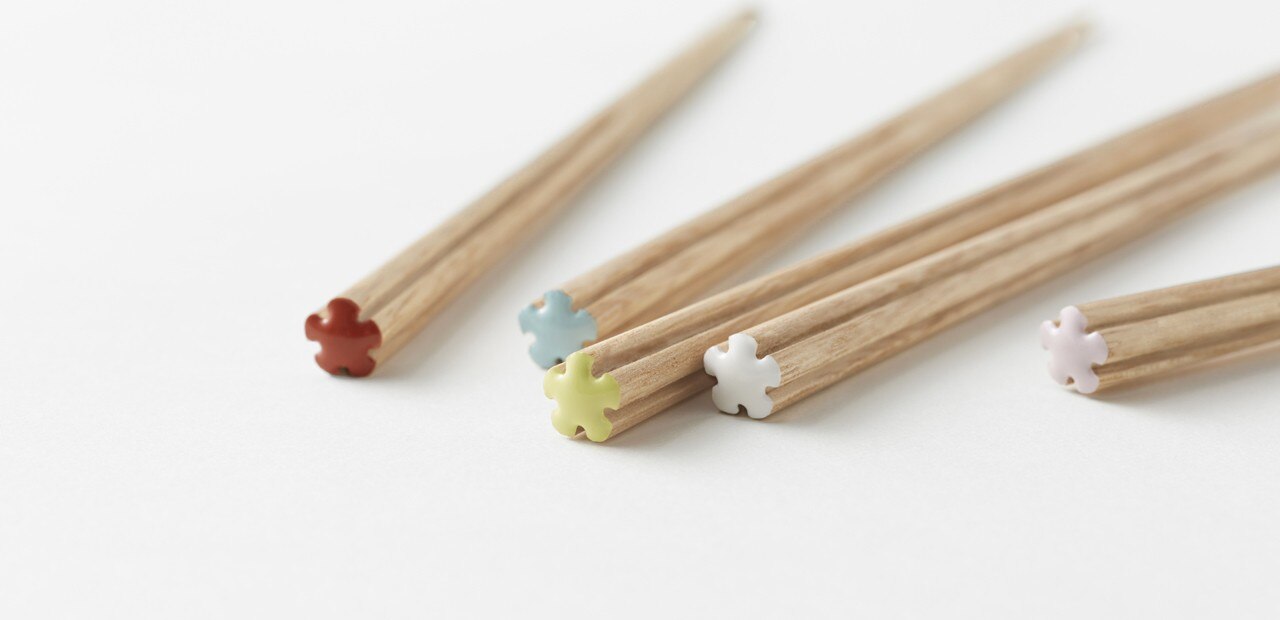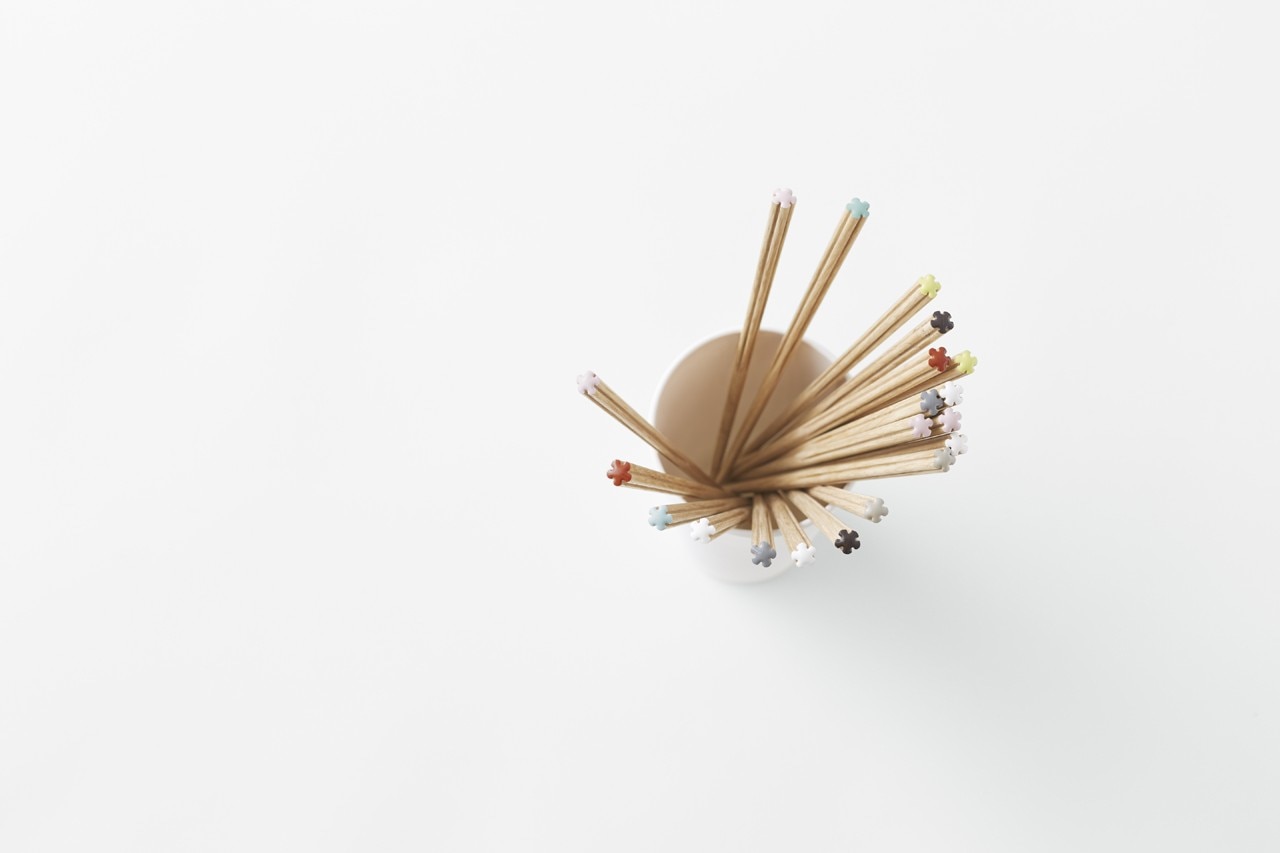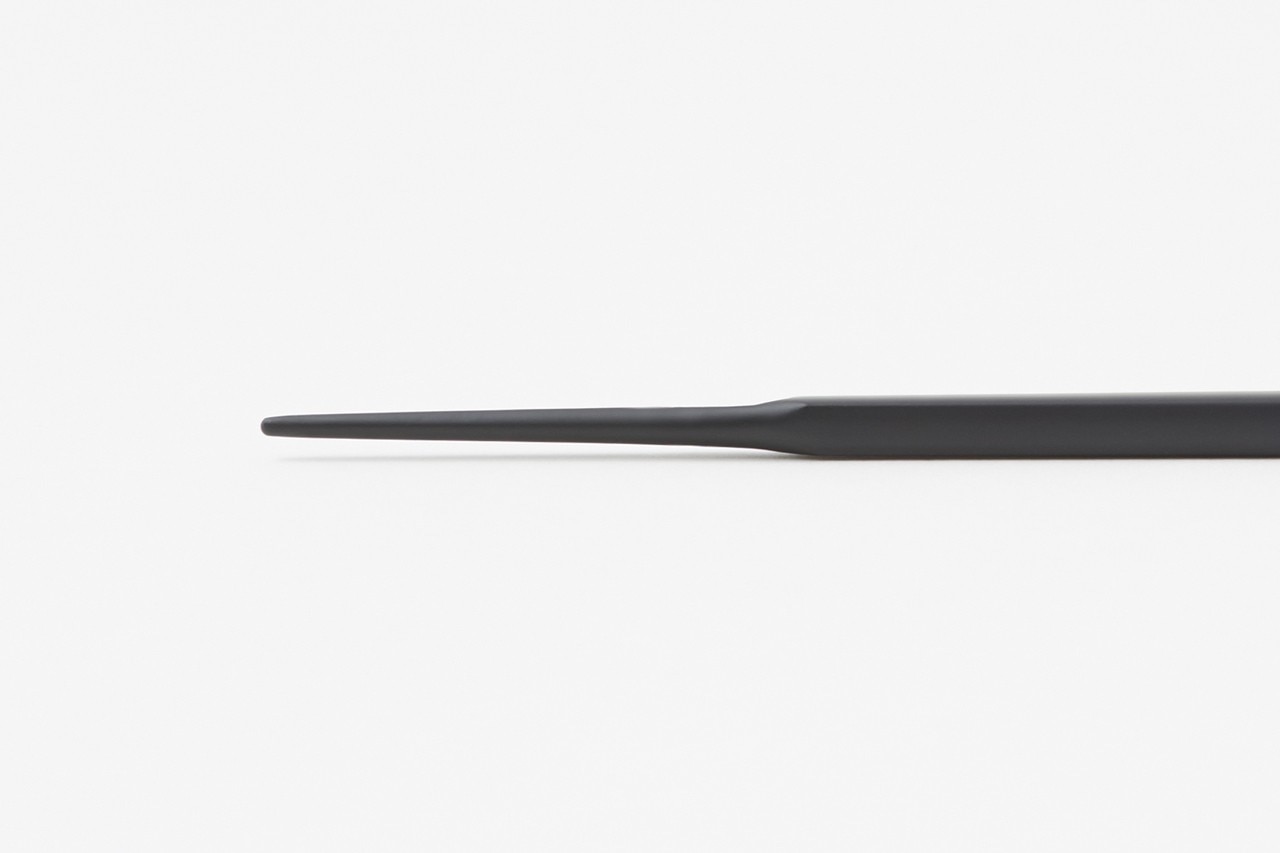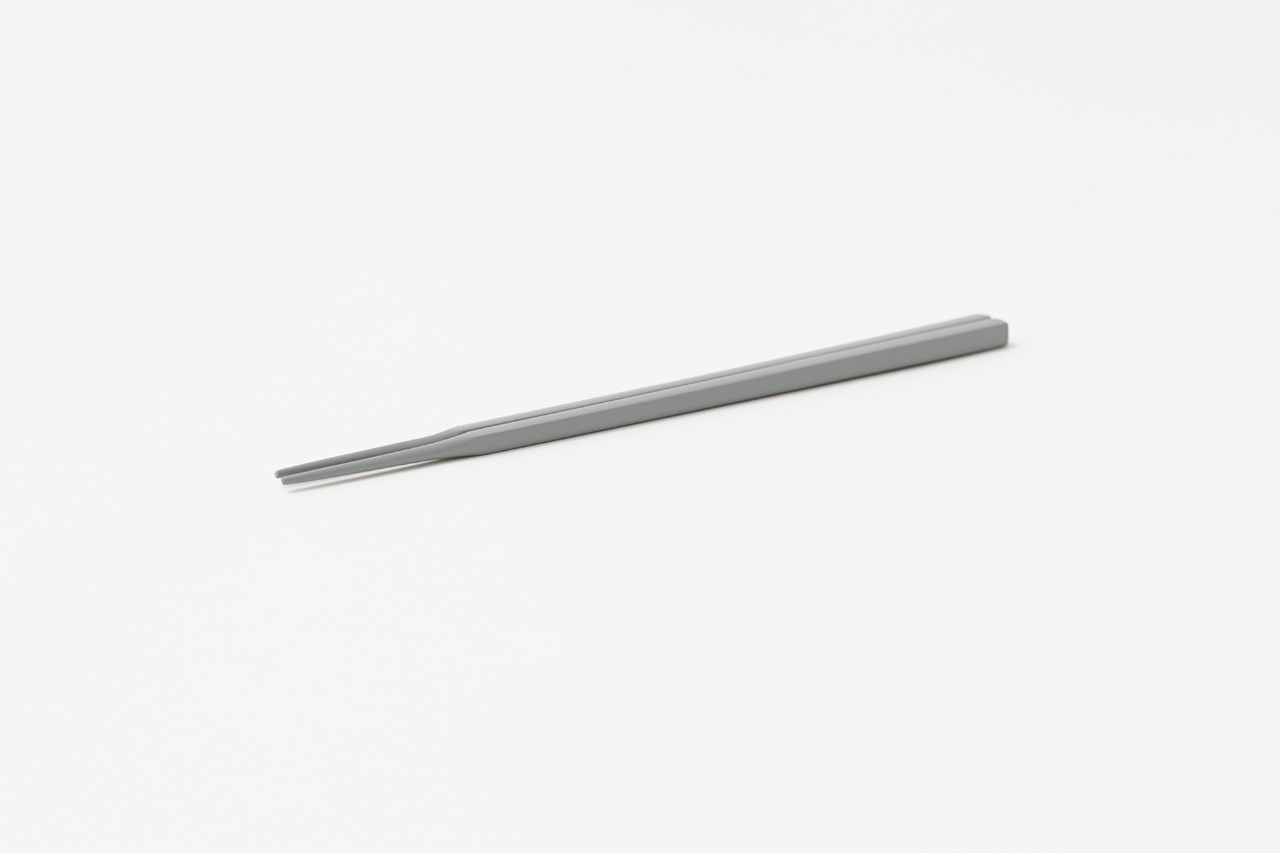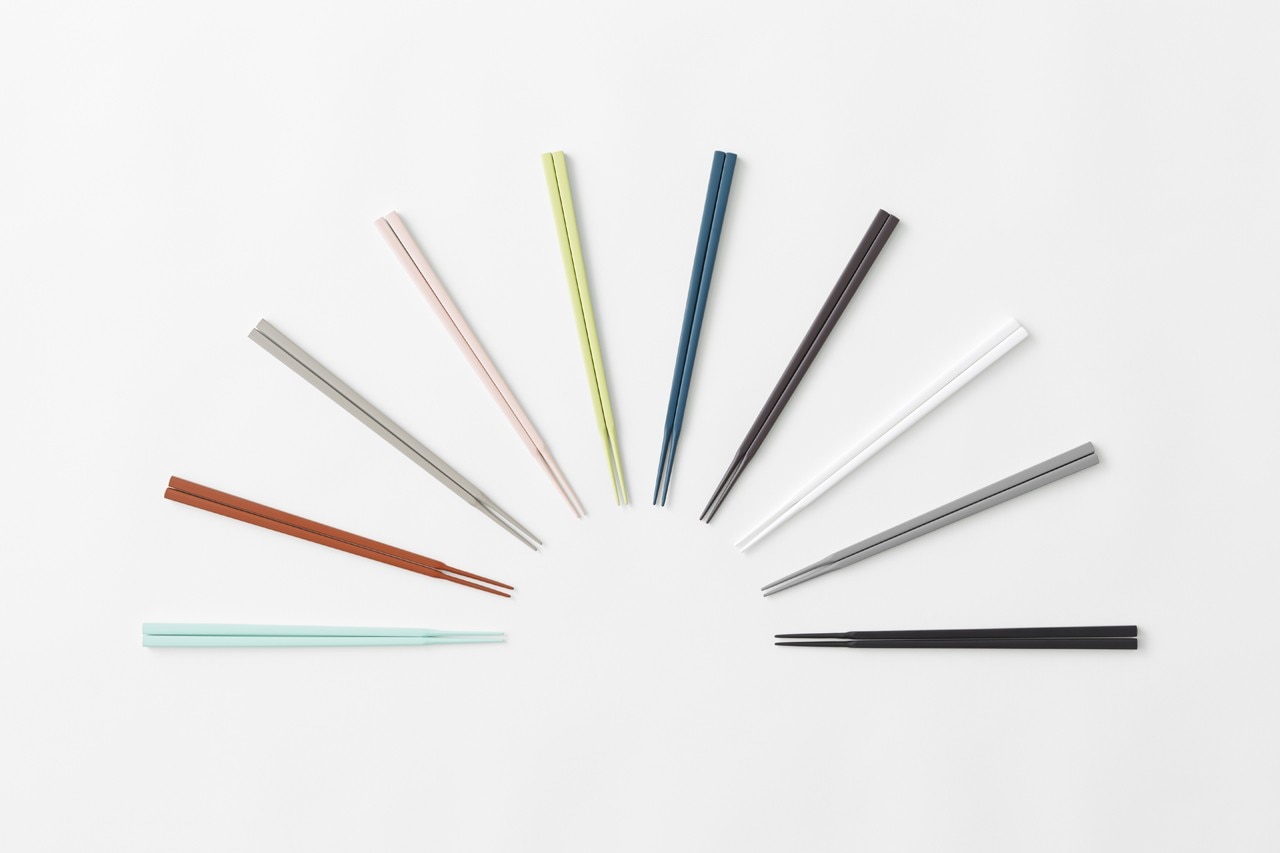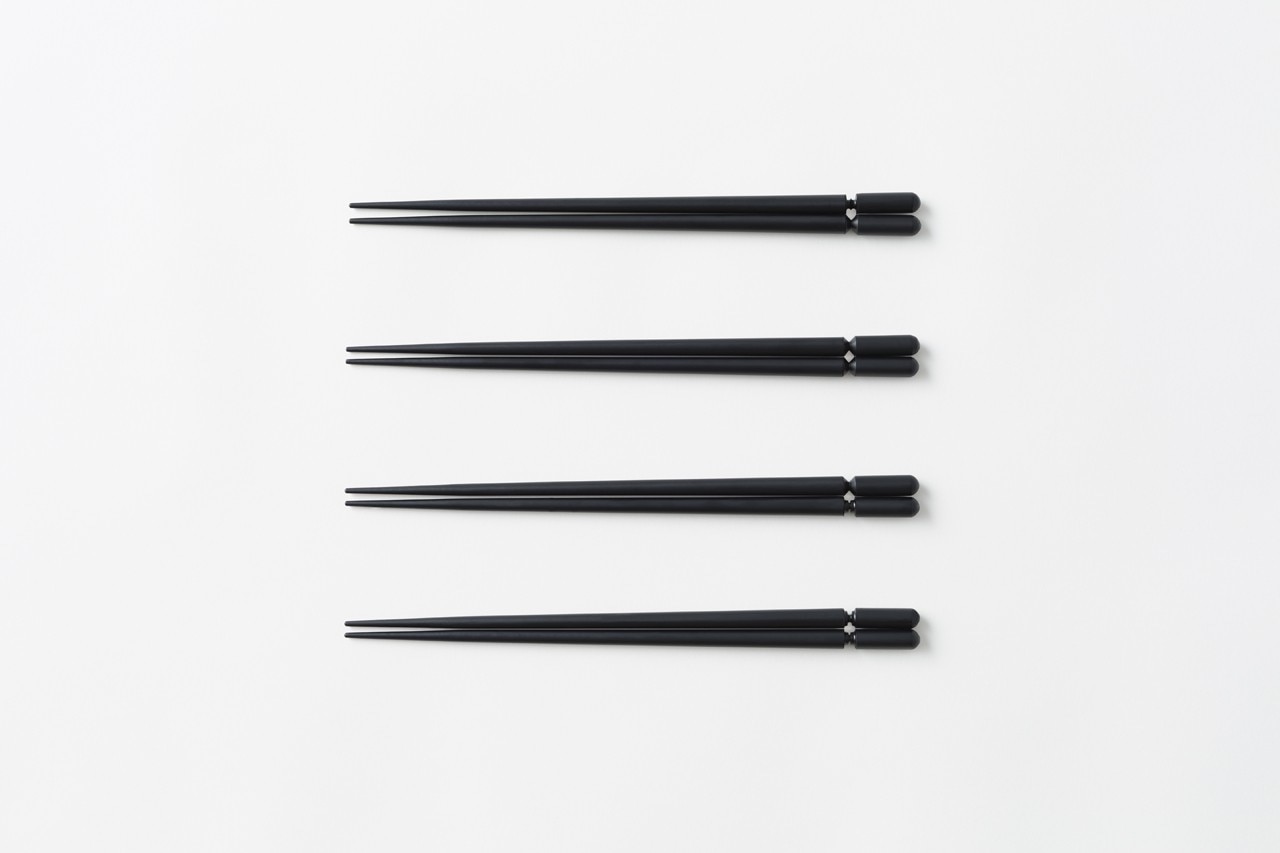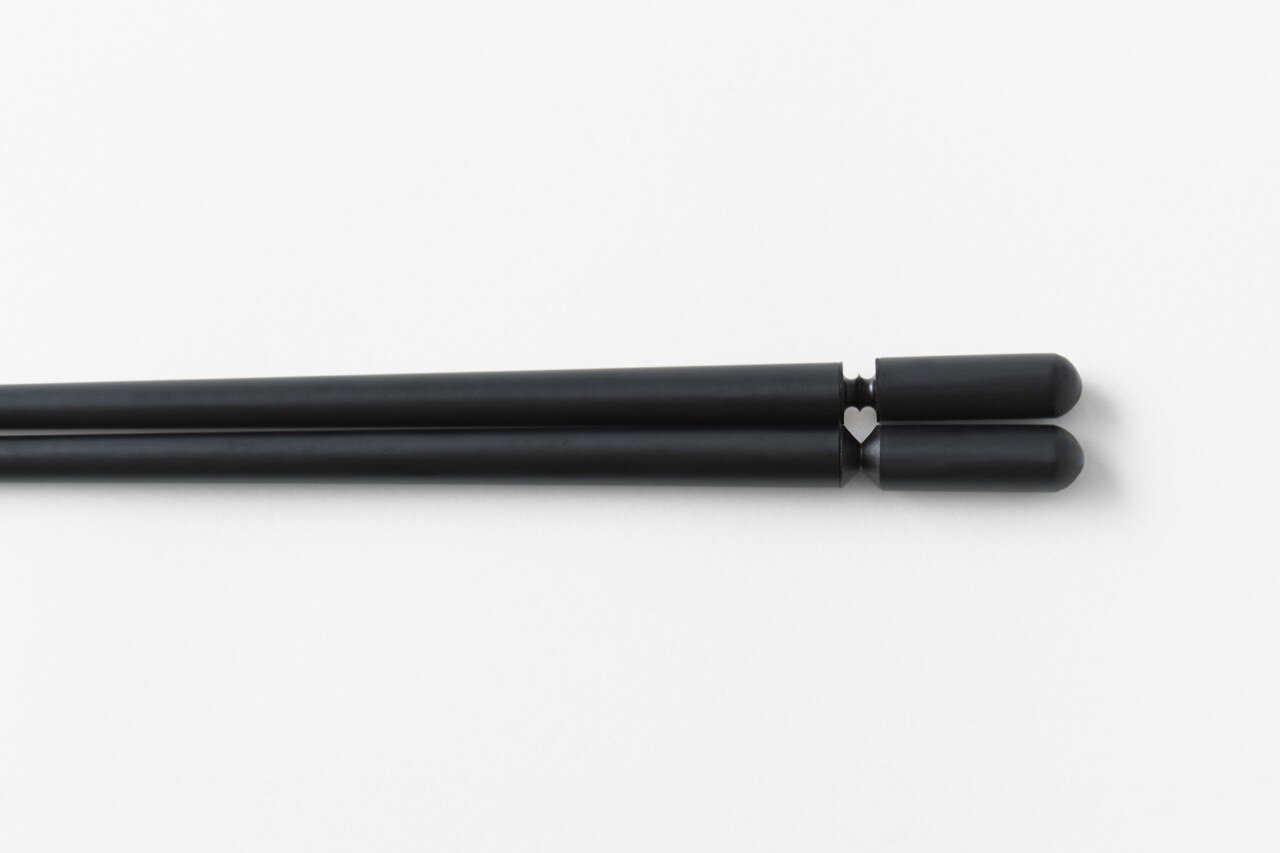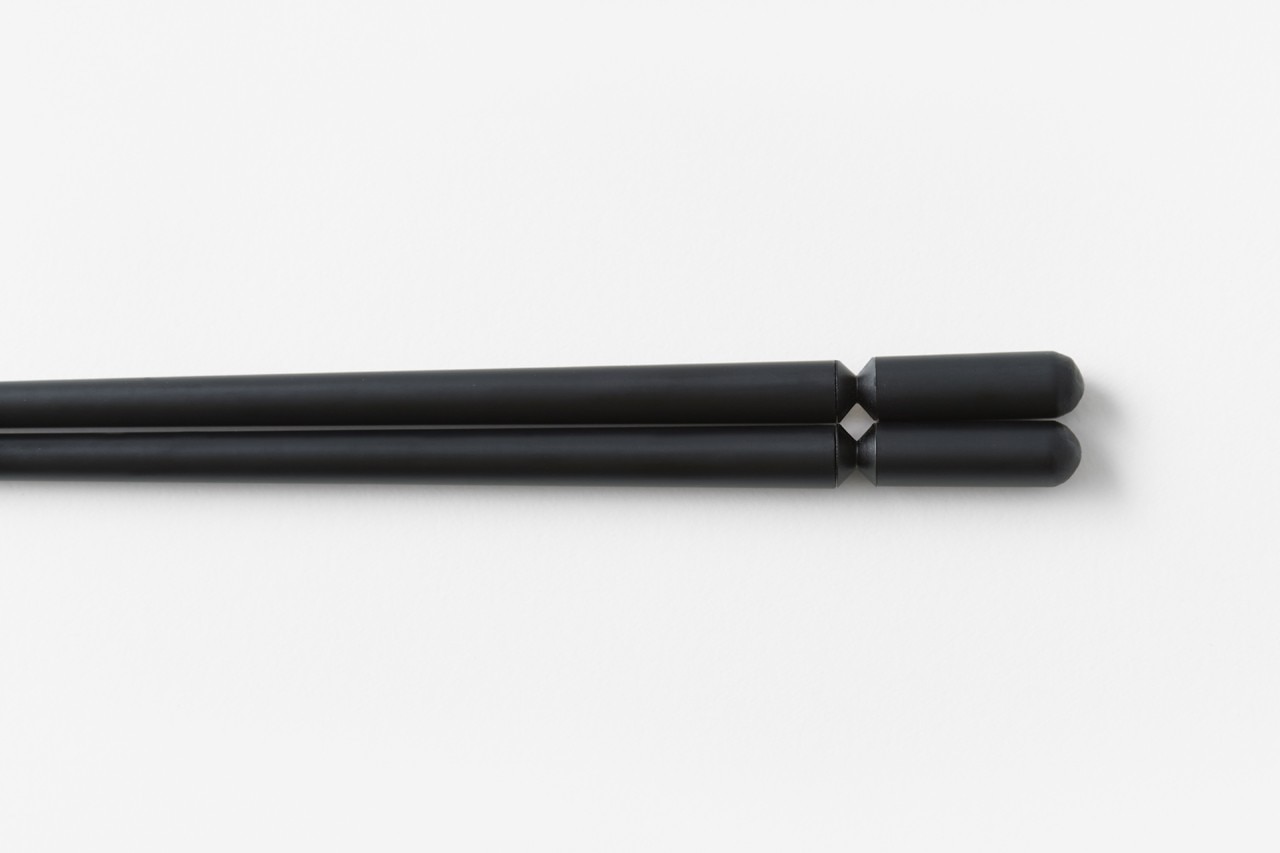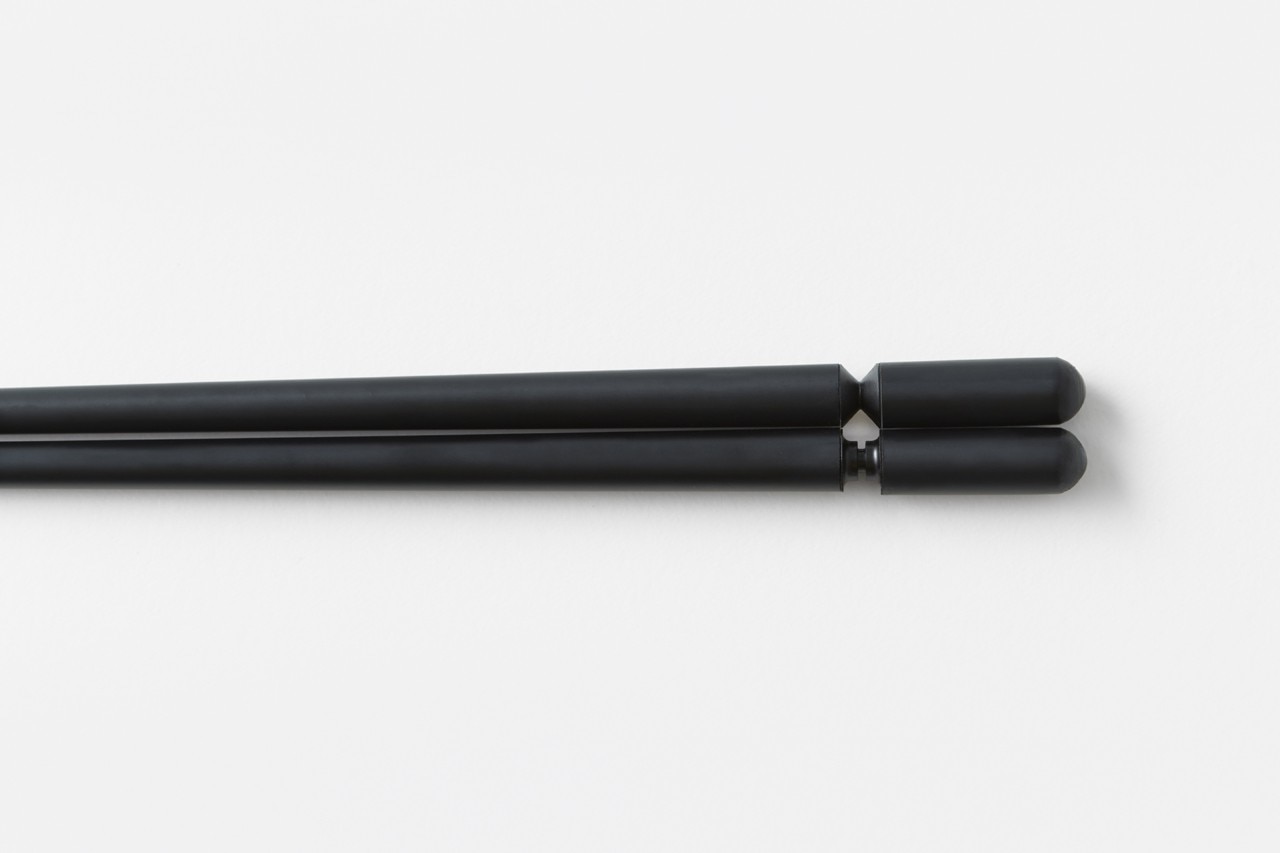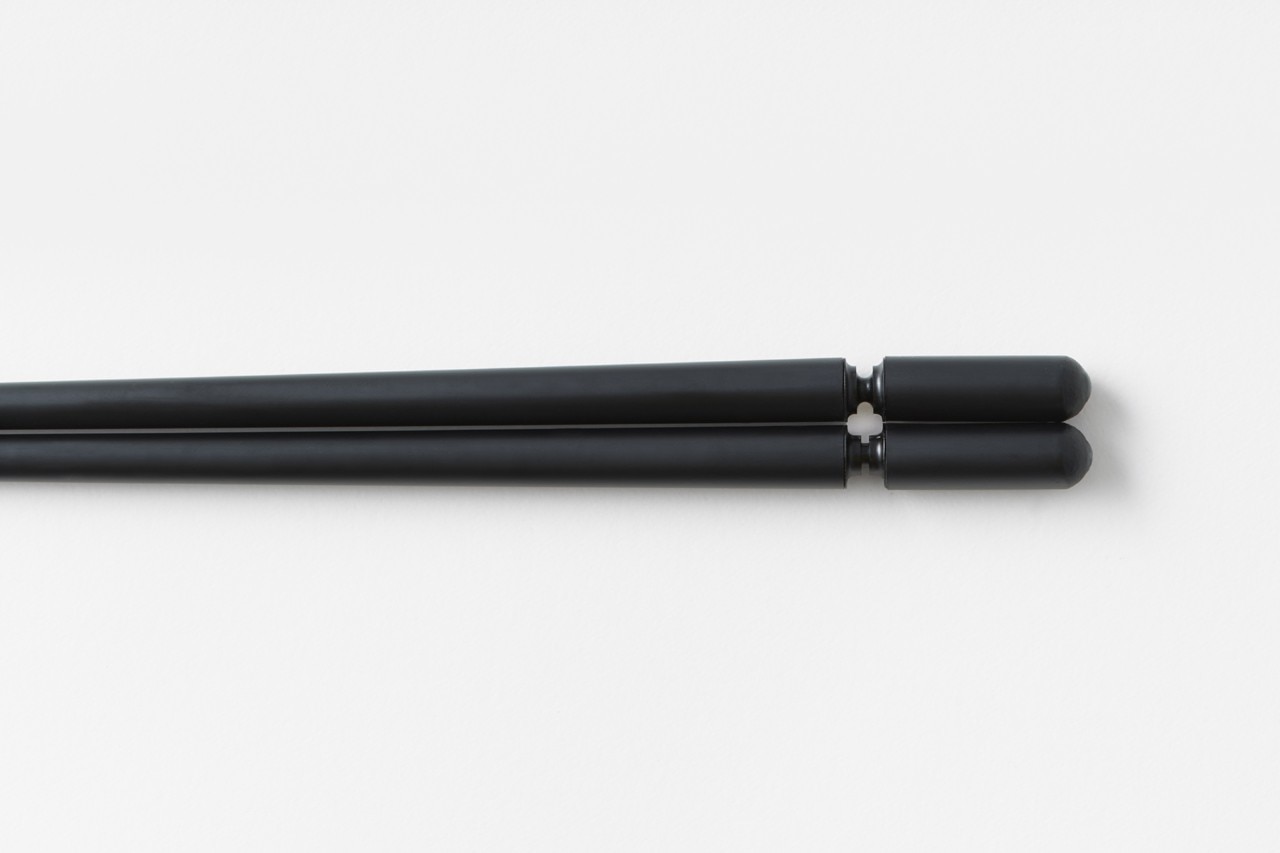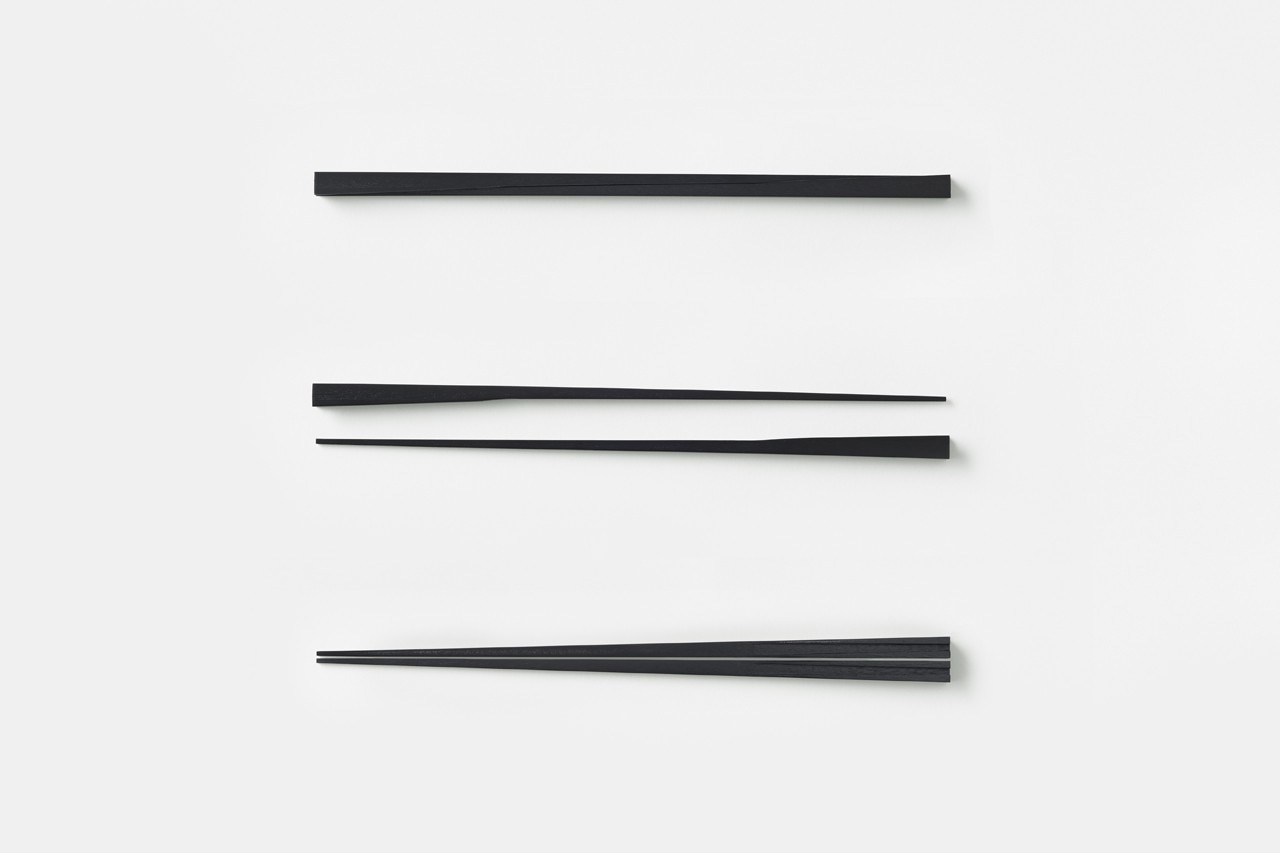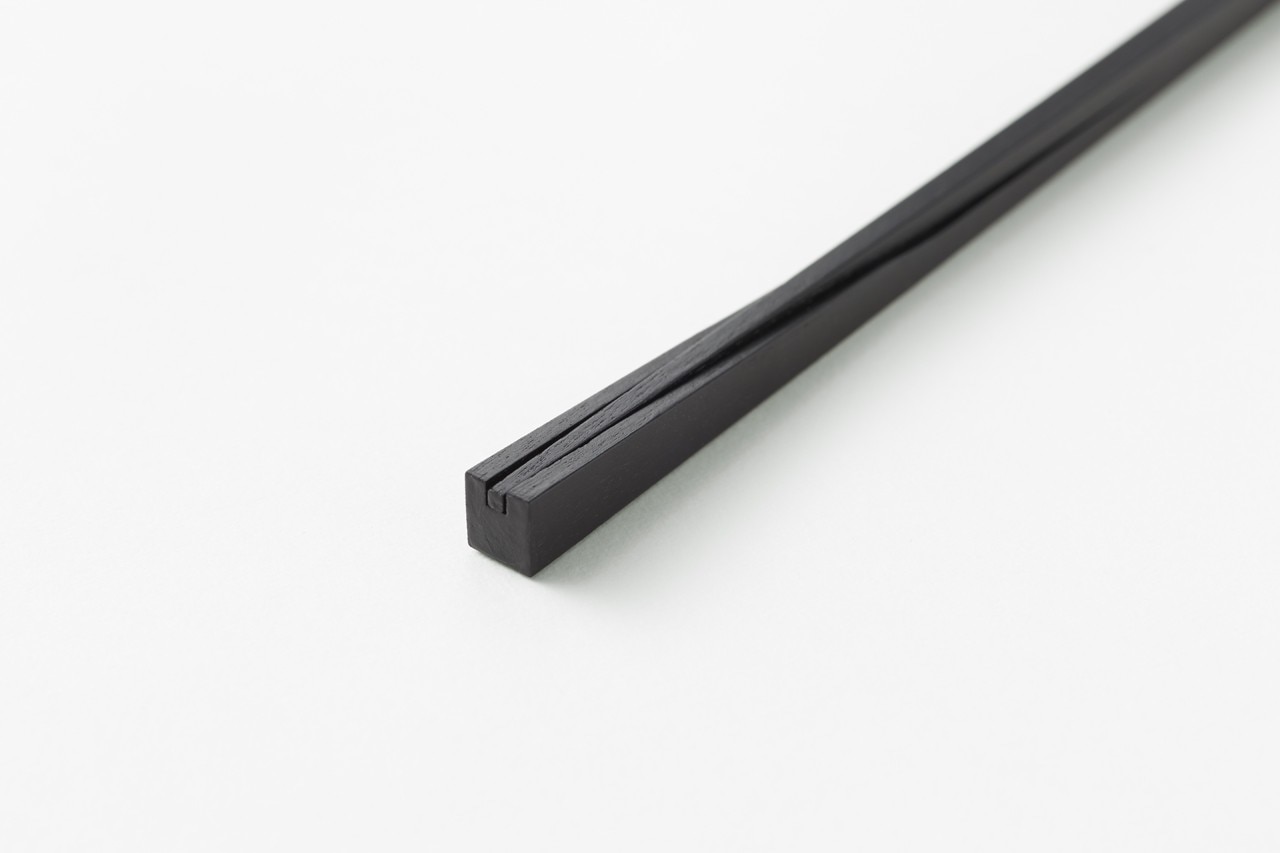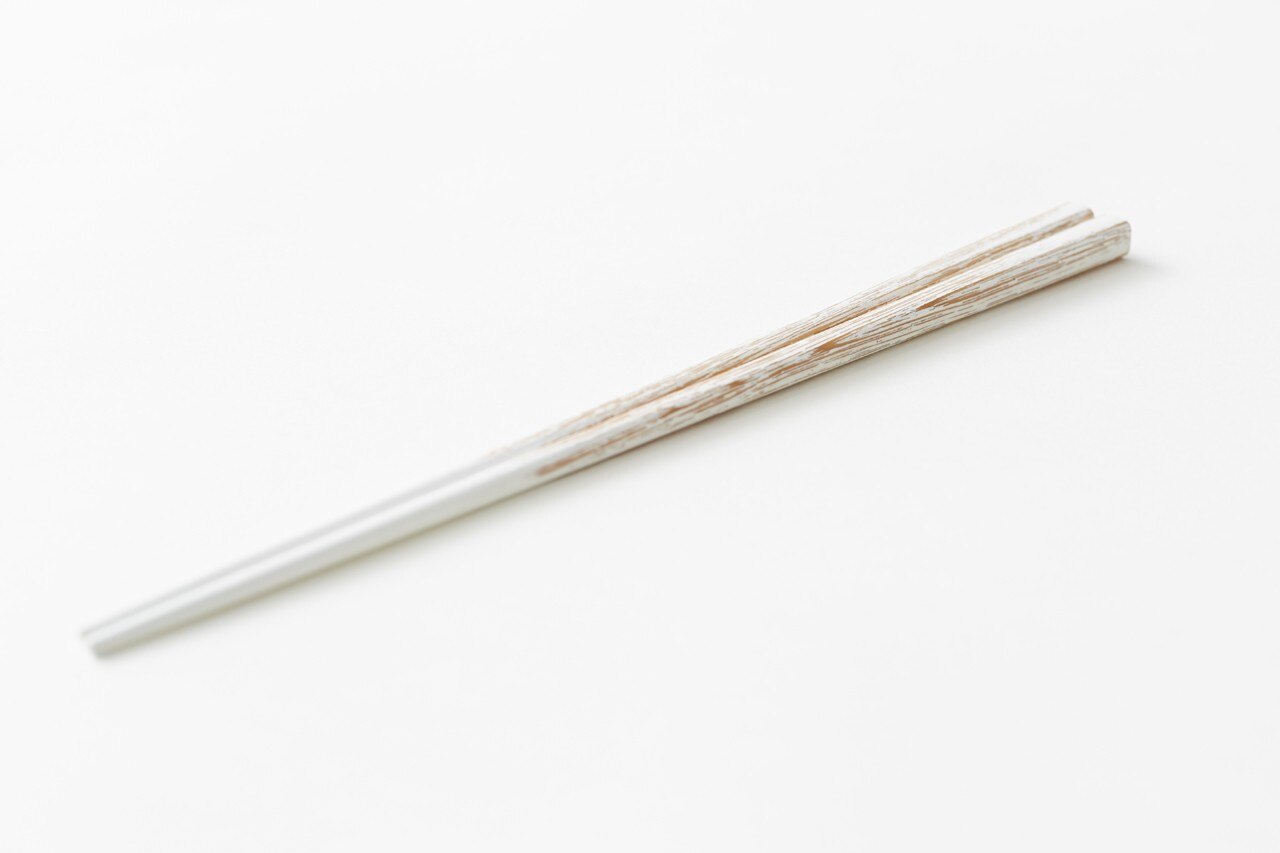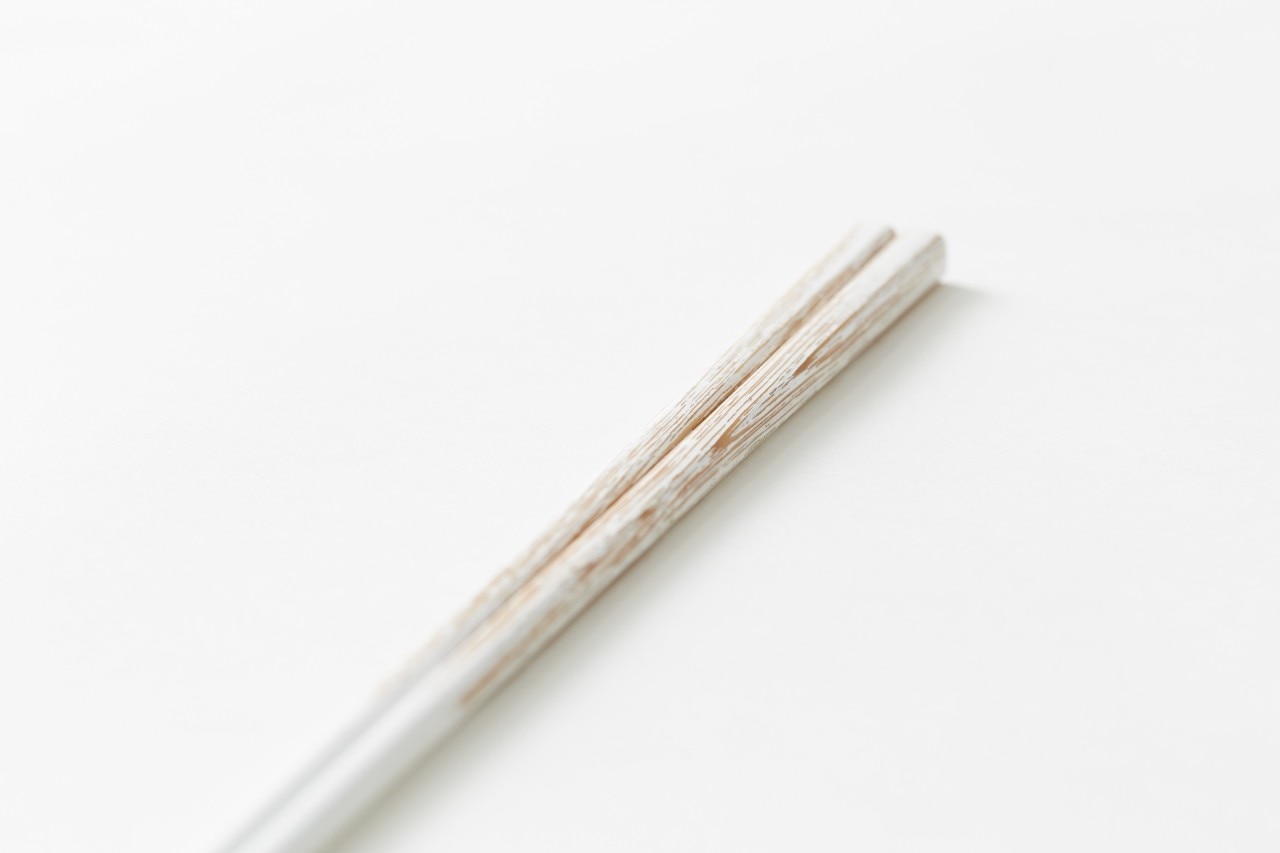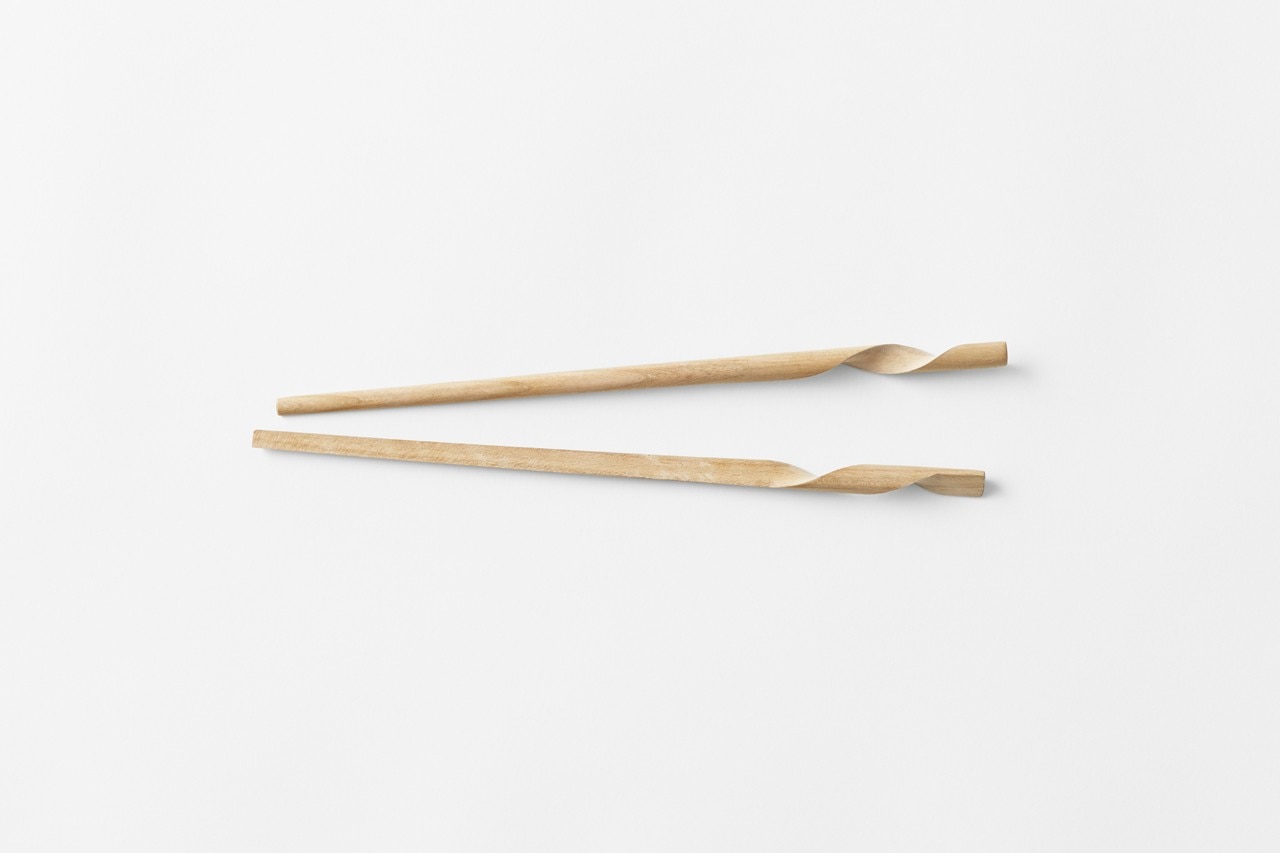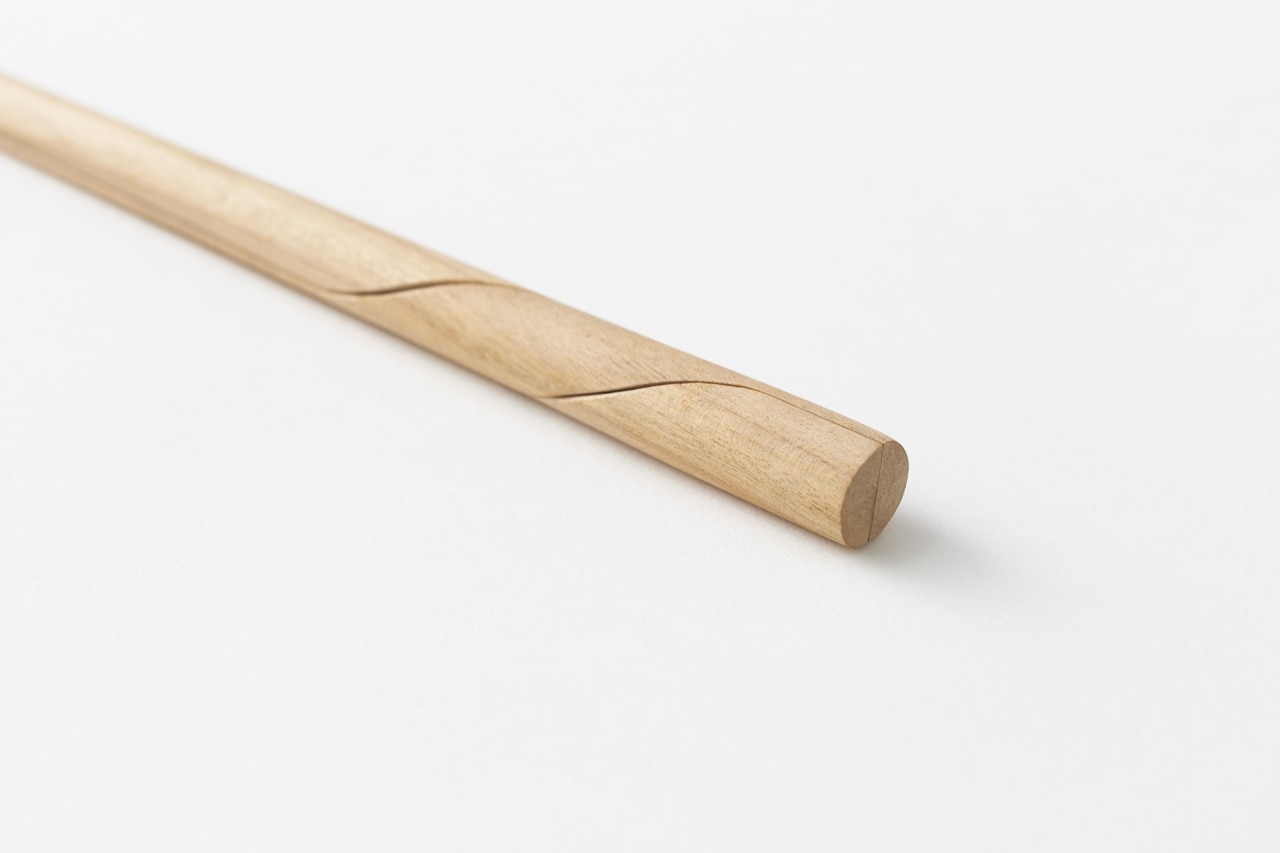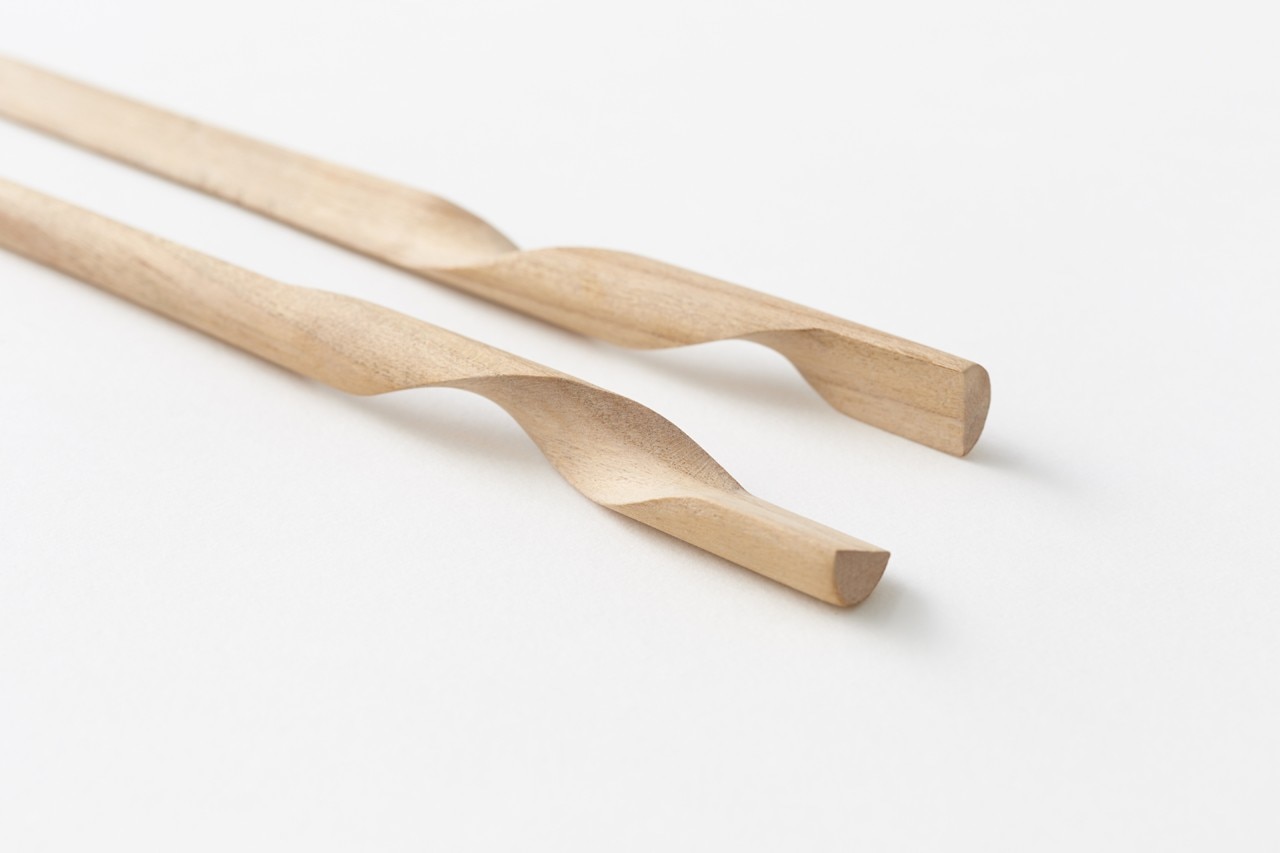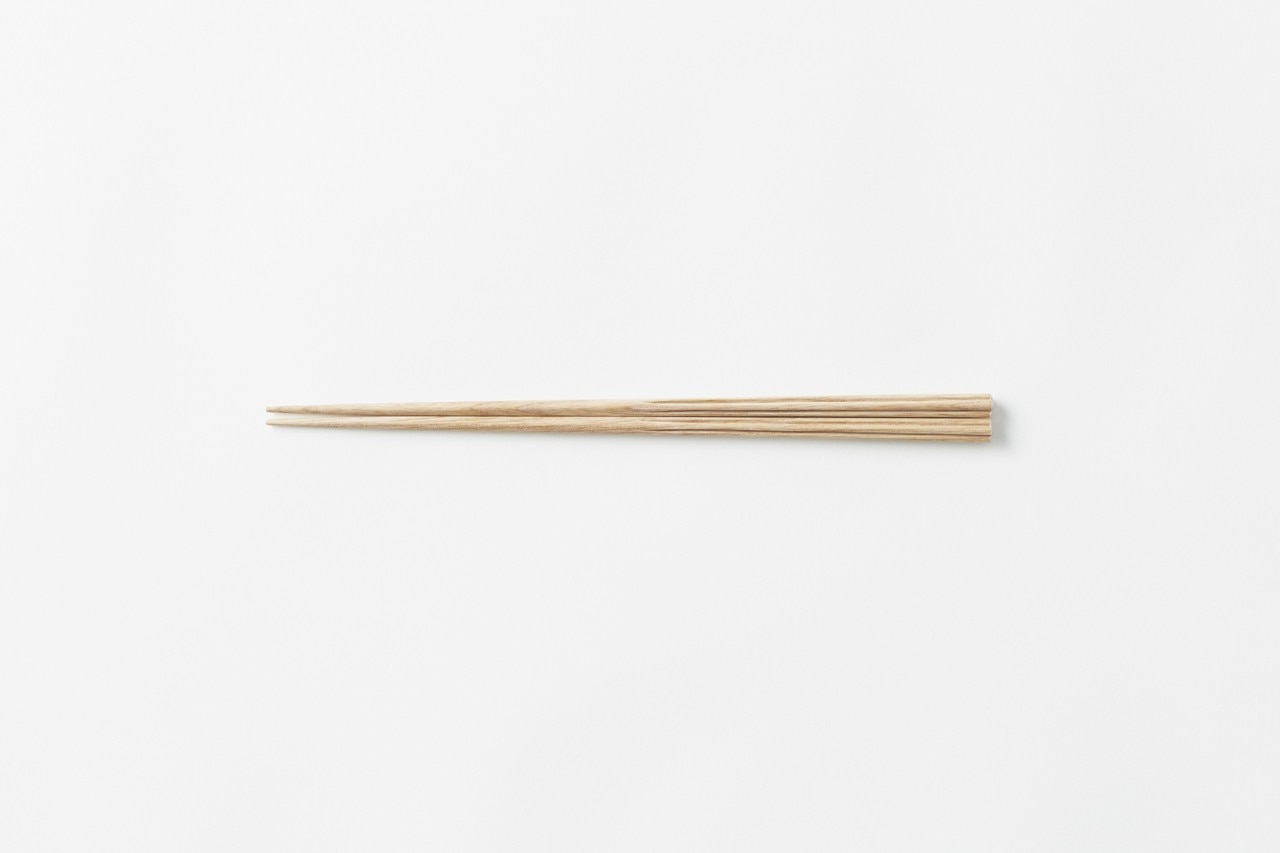
Hanataba
Round chopsticks are slippery to use, but overly square-cornered ones aren’t as comfortable to hold. Nendo explored ways of increasing the surface area of chopsticks in the hand, as a way of improving holding comfort, and discovered the natural form of the pleated cross-section. When viewed as a cross-section, the chopsticks look like flowers, so a bunch of chopsticks kept together into a cup turns into a bouquet.
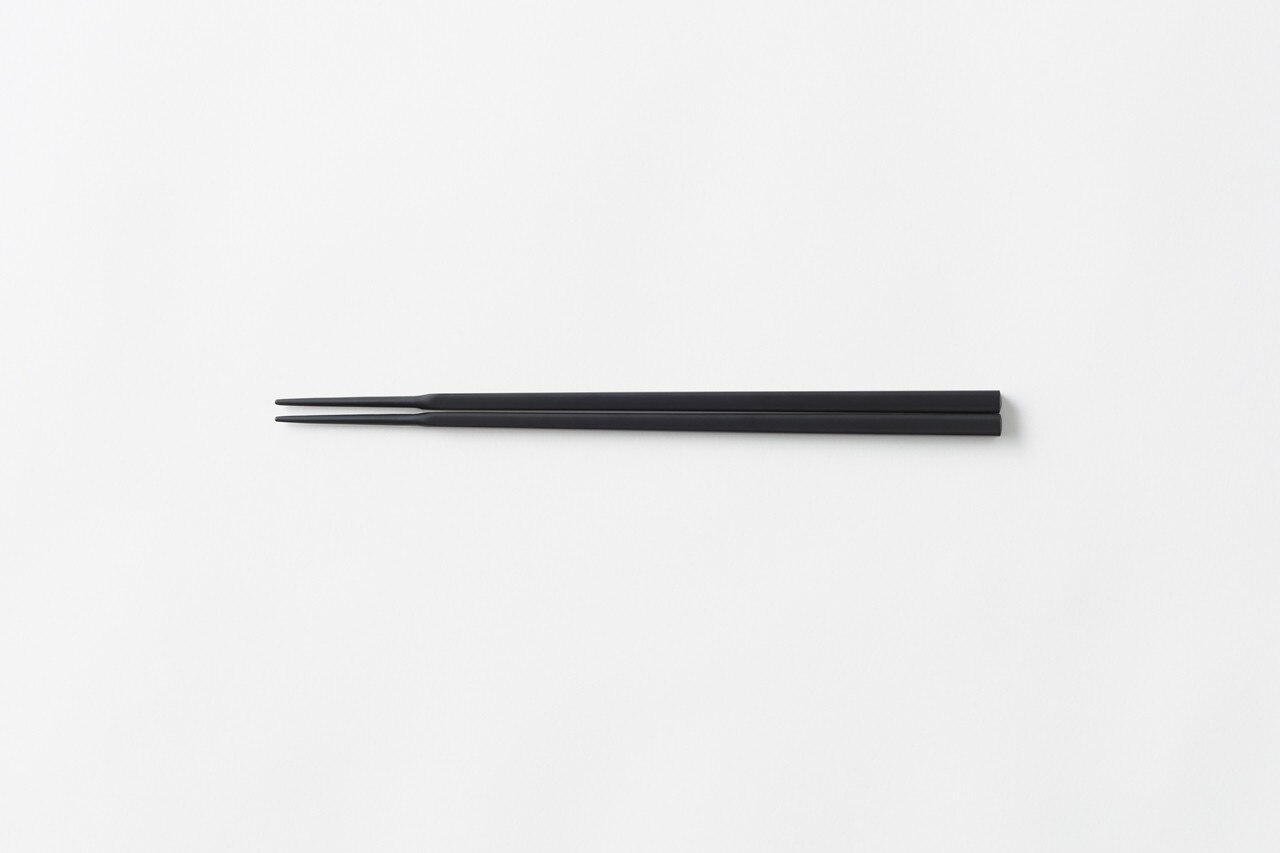
Jikaoki
The firm’s expert artisans carefully carved away the chopsticks’ tips to fine points, so that they float above the tabletop when the chopsticks are laid down for cleanliness, even without chopstick rests.
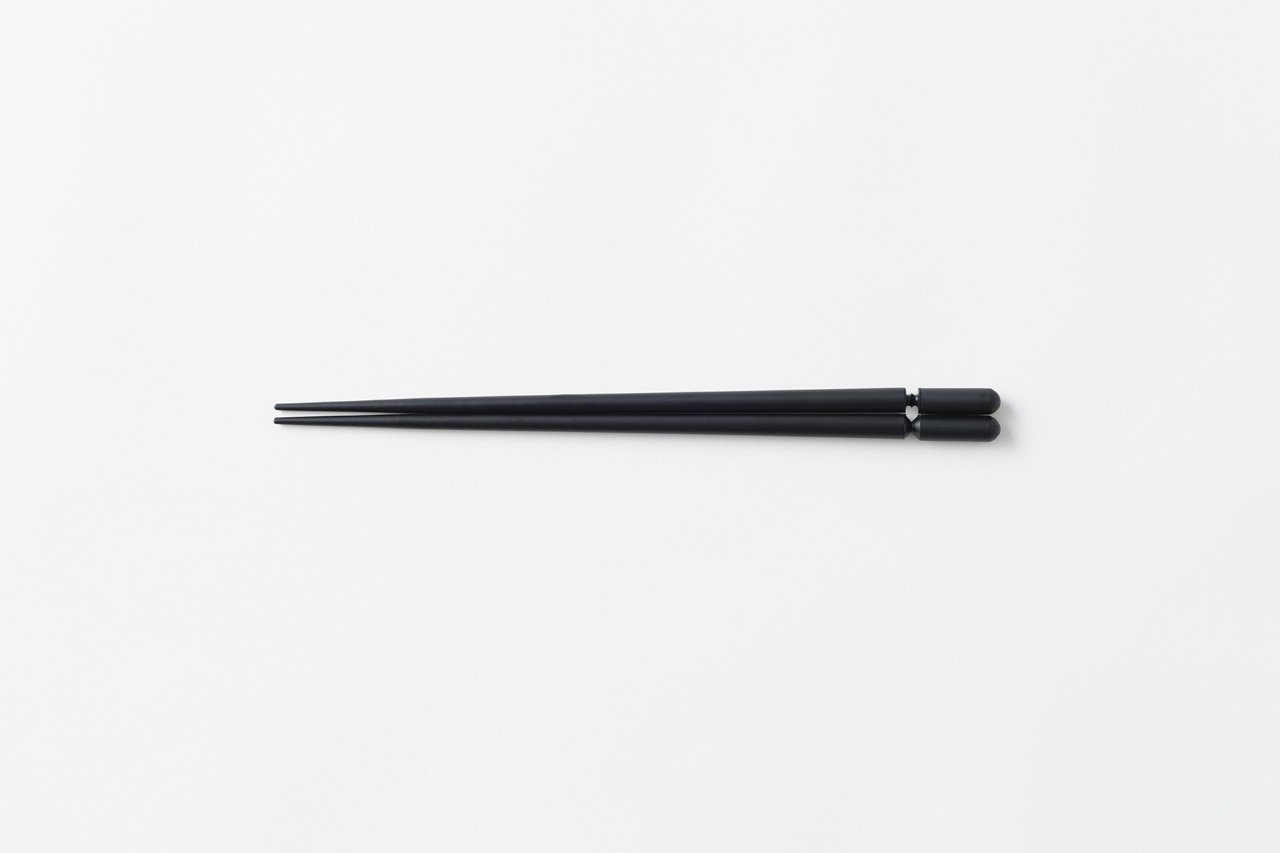
Sukima
The world is full of patterned chopsticks, so Nendo wondered if it wouldn’t be possible to create pattern in the space between the chopsticks. They came up with four patterns: hearts, diamonds, clubs and spades. The two chopsticks are carved into different shapes for all patterns but the diamonds, but it’s possible to use one of the diamond chopsticks as the top chopstick with a spade, or the bottom chopstick with a heart, for a total of four different patterns from the four different chopstick pairs. The carving made the chopsticks so thin that they weren’t strong enough with wood alone, so they embedded a carved aluminum core in the wood to solve the problem
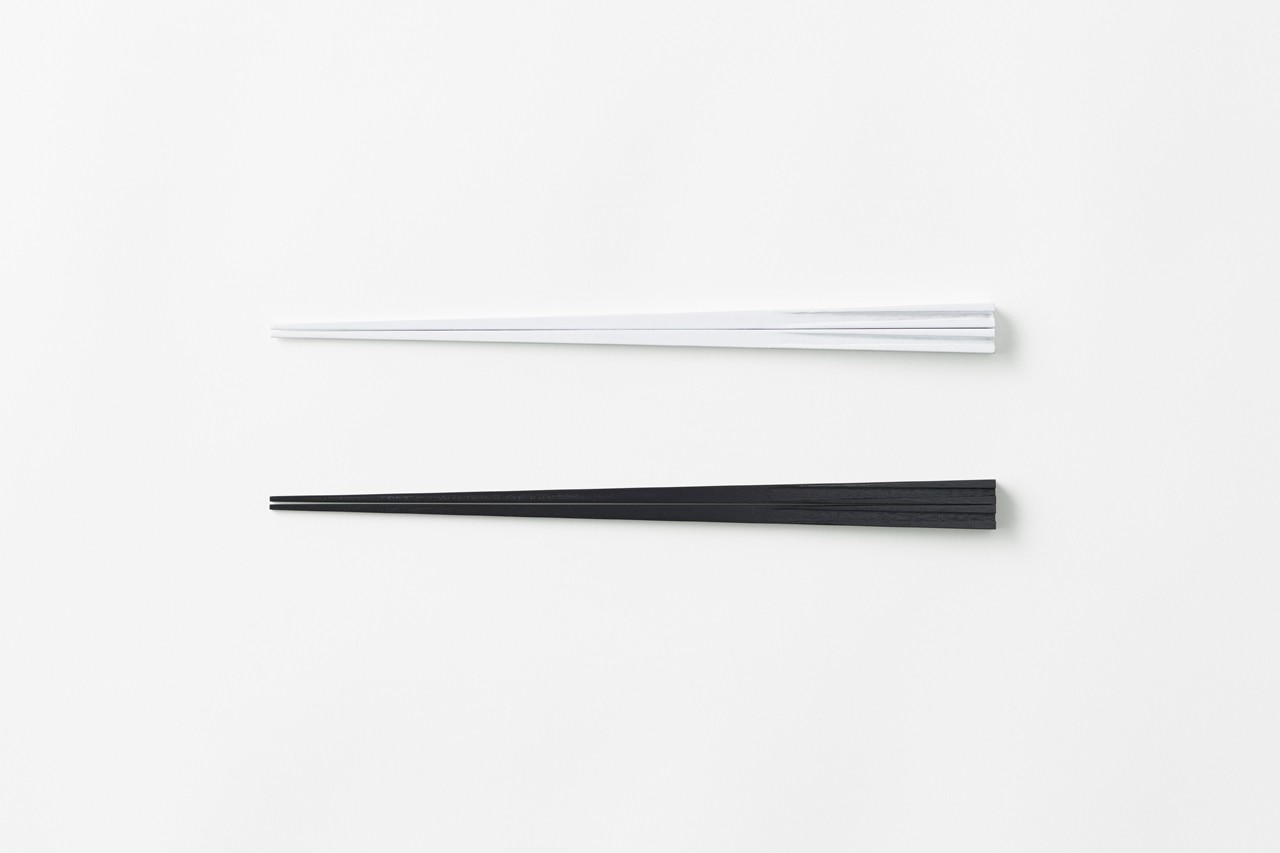
Kamiai
Nendo put a gap on one of the four sides of the square shaped chopstick, and embedded a magnet, so that the two would snap together in one piece when they are flipped and fitted to each other. They placed the magnets towards the outside of each chopstick, so that the chopsticks don’t come together accidentally while someone is using them to eat.
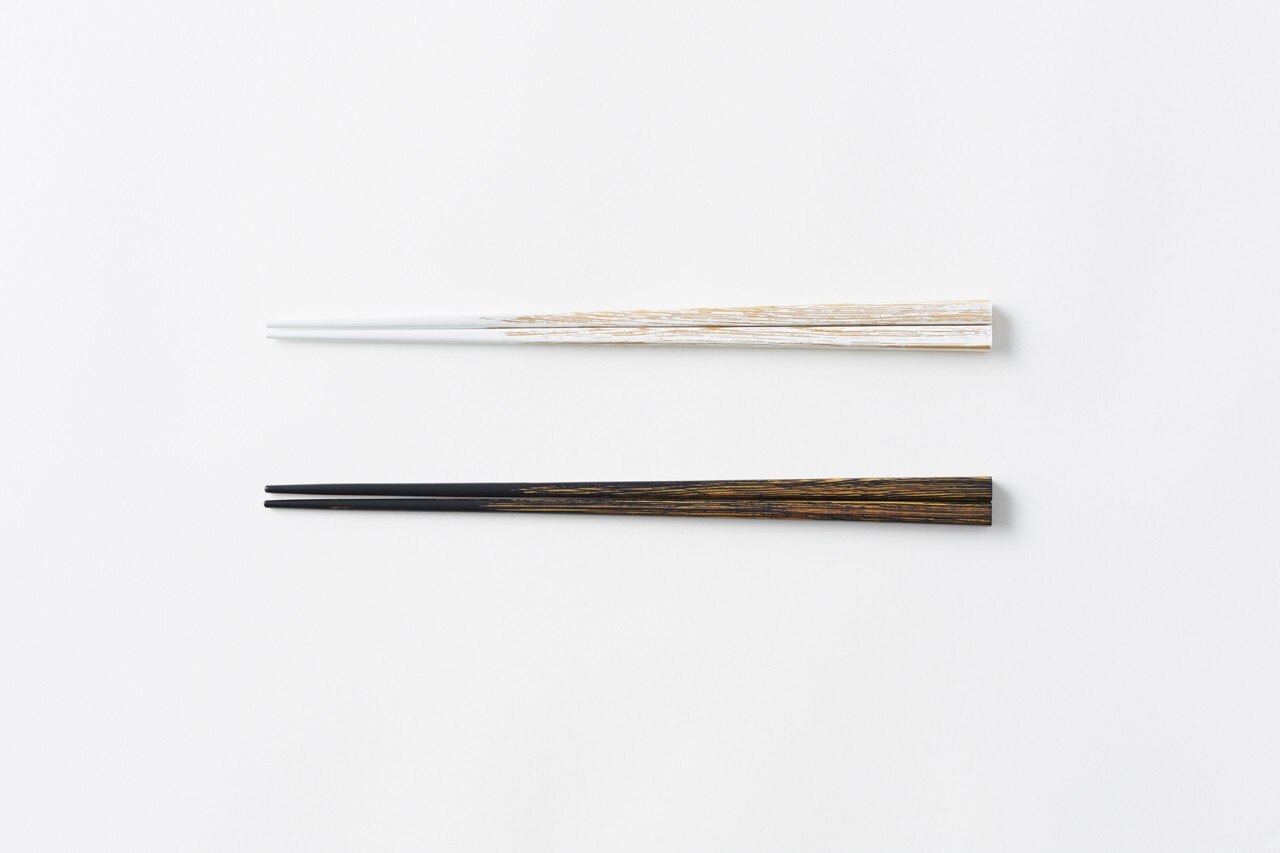
Udukuri
Nendo used the udukuri process, in which the wood surface is carved away with a metal brush, leaving only the hard wood grain, then lacquered the chopsticks and polished them again to bring out the wood grain as pattern. The traditional technique, in which materials clamshells, eggshells and gold leaf are applied with the lacquer then polished away to reveal a pattern is known as togidashi (literally “to polish and show”), and is particular to Wakasa-nuri. Unlike patterns drawn by hand, this combination of processes allows patterns from nature to appear organically.
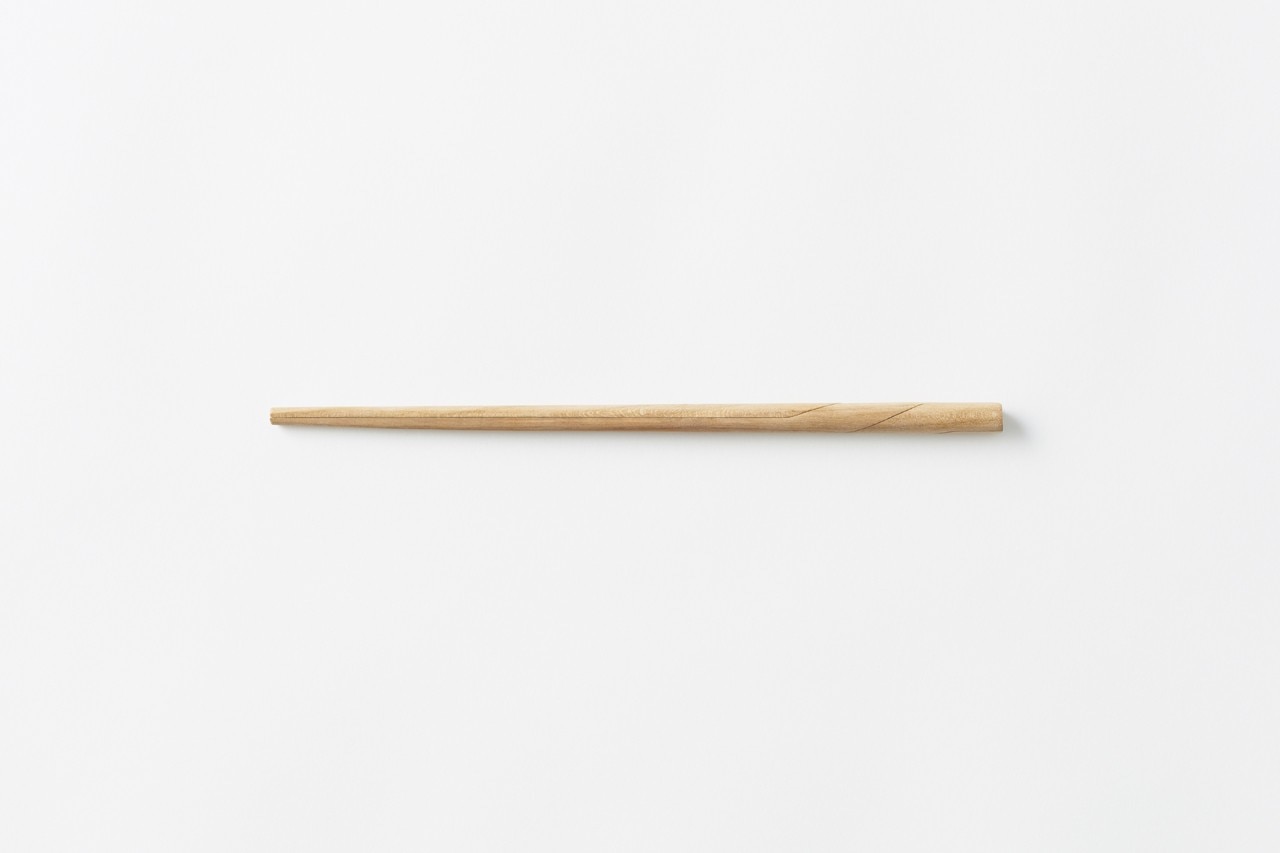
Rassen
Chopsticks ordinarily come in pairs, but the Rassen chopsticks are a single unit. They’re separated into two for eating, then rejoined into one form when not in use. Nendo used the artisans’ hand skills and a multi-axis CNC miller to create these unusual chopsticks.
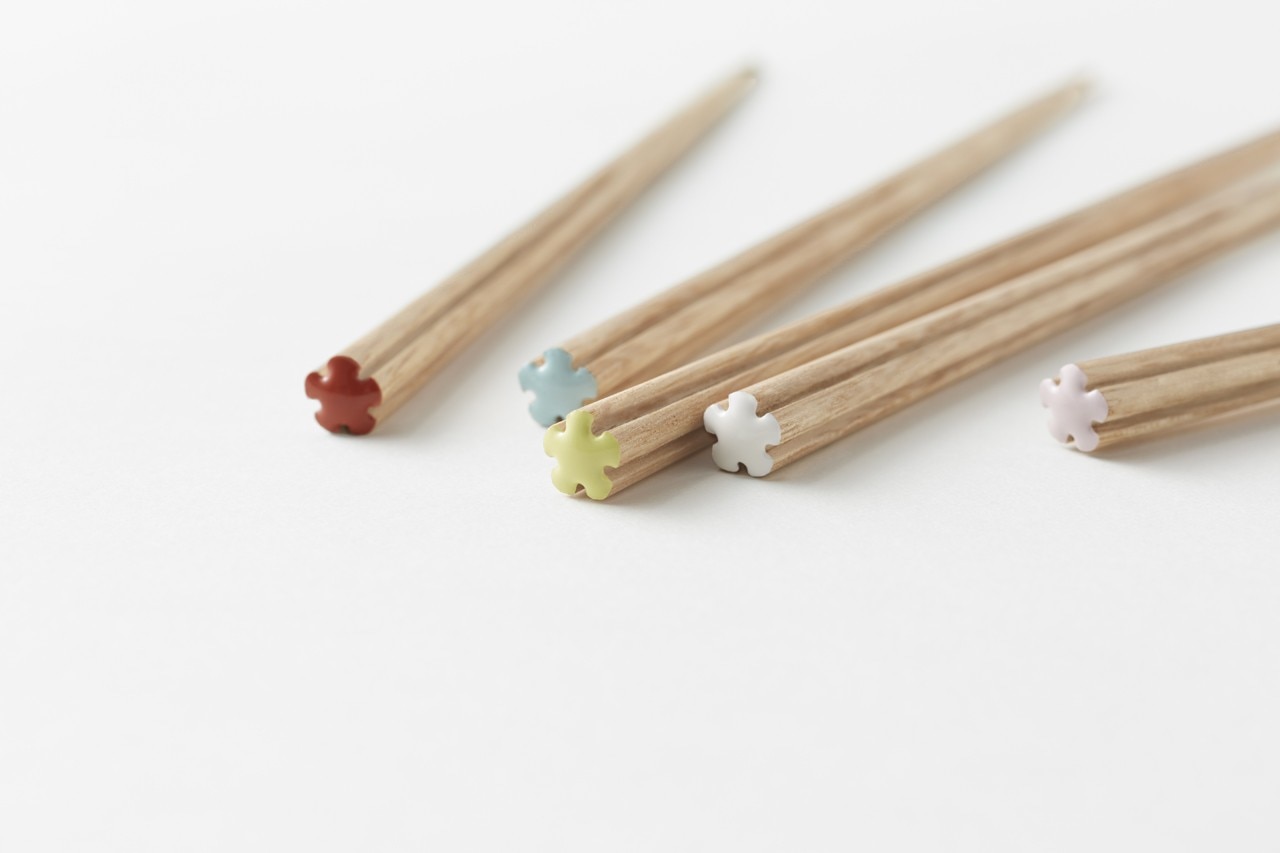
 View gallery
View gallery
Chopsticks
Design: Nendo
Produced by: Hashikura Matsukan
All the items will be sold at Seibu department stores in Japan exclusively from spring 2014.


